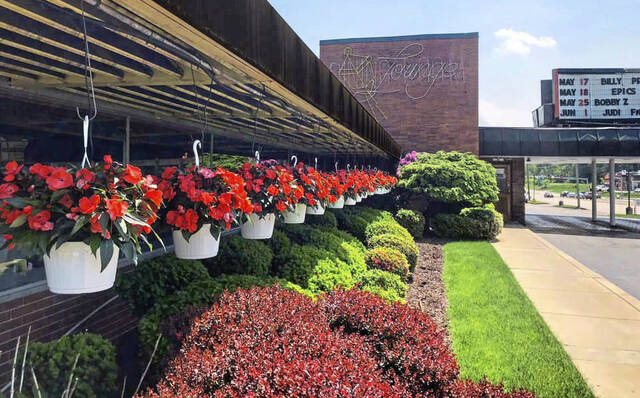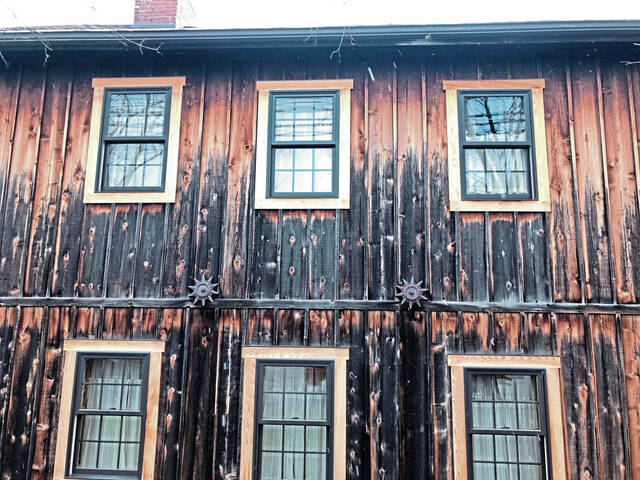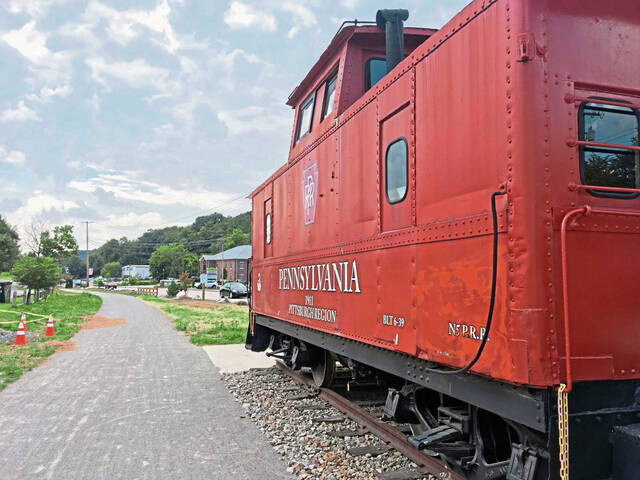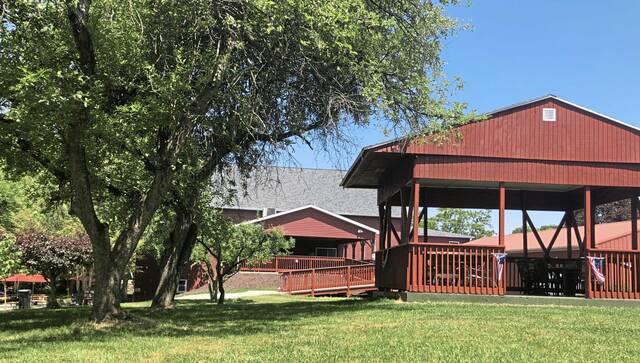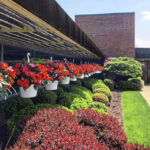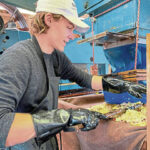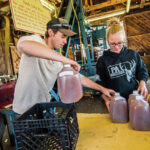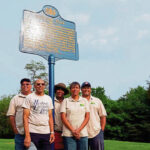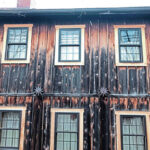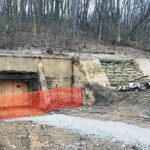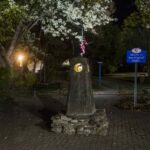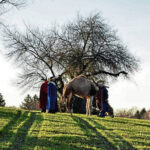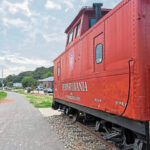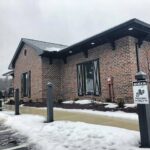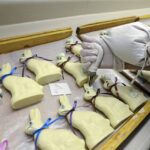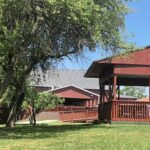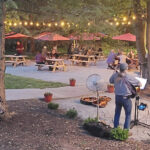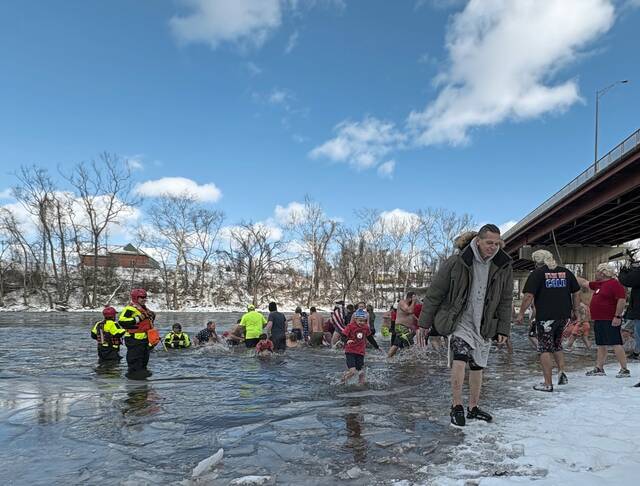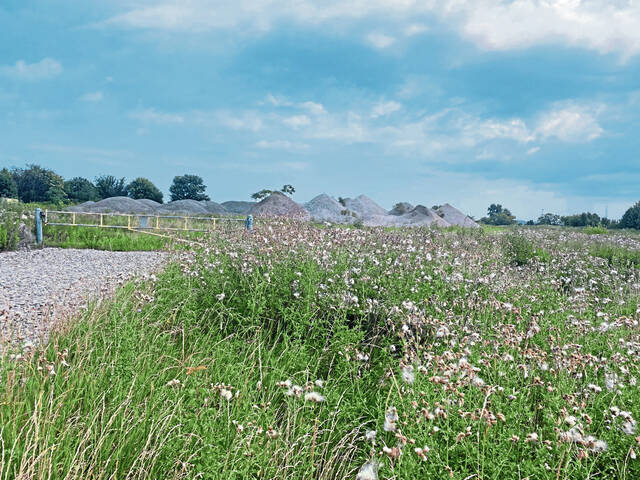(Editor’s note: To mark Westmoreland County’s 250th birthday this year, we’ve come up with a list of 250 things — 10 things in 25 communities — that we consider to be important to the makeup of our area. This series will appear each week through December. If you have a suggestion for a future installment, please email gtrcity@triblive.)
Nailing down the date Delmont was founded can be a tricky exercise.
Was it 1814, when Thomas Wilson divided 48 lots from his father’s estate and auctioned them off to form the Salem Crossroads neighborhood?
Was it 1833, when it was incorporated but still referred to as “New Salem Borough”?
Or was it 1871, when the town postmaster changed the mailing address to “Delmont,” meaning “valley in the hills”?
A little farther west along Old William Penn Highway, Export’s history is a little easier to track. In 1892, the Westmoreland Coal Co. opened its Export mines and constructed housing for workers on nearby land. By 1900, the mine had nearly 500 employees, and, by 1904, it was the largest single mining operation in the county. Export was officially founded in 1911.
Salem saw its first settlers arrive in 1765, with the township incorporating in 1788. By the late 1800s and early 1900s, several coal mining neighborhoods such as Crabtree, Forbes Road, Slickville and Lauffer Mine had formed. And because of the way its western border curls around other towns, several landmarks often thought to be in Delmont are actually located in Salem.
Today, the three communities are home to more than 9,500 people. Here are 10 places to visit in Delmont, Export and Salem.
Apple’n Arts Festival
In the weeks leading up to early October, members of the Fort Allen Antique Farm Equipment Association fire up the 1907 apple press at Delmont’s Shields Farm and start churning out thousands of gallons of the apple cider that will be sold all weekend at the annual Apple’n Arts Festival, which marked its 40th anniversary in 2022.
From cider and an apple-centered cooking competition to live music and the “Baby Apple Cheeks” contest, the festival regularly attracts thousands of visitors to Delmont.
This year’s Apple’n Arts Festival will be Oct. 7-8 at the farm on Overly Lane. For details, visit DelmontAppleNArts.com.
Traffic control
Sometime around 1920, motorists traveling to “Salem Crossroads” — the modern-day intersection of Freeport, Pittsburgh and Greensburg streets in Delmont — would encounter an early form of traffic control.
Referred to as a “traffic dummy,” and conceived in the 1860s in London, the small structures were originally gas-lit traffic lights. In London, they replaced police officers who typically stood amid busy intersections directing traffic outside the city’s House of Parliament.
When electric-powered traffic lights arrived in town, the traffic dummy was discarded, and former members of Delmont’s public works department found it on a hillside behind the old Rock Springs skating rink property. It was cleaned, outfitted with a solar-powered light and is now on permanent display at Delmont’s Rose Wigfield Parklet on Greensburg Street.
Delmont Pilgrimage
When it began more than a half-century ago, the Delmont Pilgrimage was a short jaunt along East Pittsburgh Street, with organizers lighting the street with blue light bulbs and using actors and vignettes to tell the story of Jesus’ birth in Nazareth.
Today, it takes place on the Shields Farm property, run entirely by volunteers. The pilgrimage nearly stopped happening after 2016, but former Delmont librarian Denni Grassel agreed to take over organizing, and a reinvigorated volunteer committee has kept it going strong.
In addition to the vignettes, local churches take part, hosting visitors and special events to help stoke the holiday spirit. Once the date is set, tickets for the 2023 Delmont Pilgrimage can be purchased at DelmontPilgrimage.com.
Local history
A quick stroll around downtown Delmont reveals much about the borough’s history.
The home at 29 E. Pittsburgh St. was once the tannery of Robert Shields, and operated until 1870. The building at the corner of Greensburg and East Pittsburgh streets, which now houses several businesses, was once the Central Hotel, built in 1814.
The borough building at 77 Greensburg St. was once the Delmont schoolhouse. And while the watering trough at 38 E. Pittsburgh St. is now a replica, it occupies the same spot as the original trough. Built in 1810 by the town’s first postmaster, Hugh Bigham, it provided fresh spring water for residents and travelers along the toll road that ran through town. The trough was still in use as late as the 1960s.
Coal company history
In Export, reminders of the borough’s past as a coal town are plenty evident. At the far end of Washington Avenue, borough officials have preserved the former fan house that supplied fresh air to Westmoreland Coal Co. workers in the mines below.
Borough officials added signage to the fan house building in 2013, and the Export Historical Society was able to use local grant funding to place an informational sign and visiting area near the fan house.
They are in the process of converting the former No. 2 mine entrance into a historical area. Uncovered from the hillside behind District Court 10-3-02 as part of a 2018 Eagle Scout project, borough and historical society officials are working with the state’s Bureau of Abandoned Mine Reclamation to make the entrance safe for visitors and install more informational signage there.
Turtle Creek Valley Railroad Caboose
At Export’s 2016 Ethnic Food & Music Festival, borough officials unveiled a restored 1939 caboose that today sits along the Westmoreland Heritage Trail at the intersection of Kennedy and Lincoln avenues.
It once belonged to Norfolk Southern Railroad. In the early 1980s, Export-based company Dura-Bond bought a former Norfolk rail spur and operated the Turtle Creek Valley Railroad between Trafford and Saltsburg.
The caboose was donated to the Export Historical Society in 2014, and Dura-Bond volunteers repainted it the traditional red color, adding the insignia of the former Pennsylvania Railroad.
Rail station replica
Rail commerce and travel used to play a much more crucial role in the daily life of Export residents. In recognition of that history, the Export Historical Society commissioned construction of a replica of the borough’s former rail station.
It sits along the Westmoreland Heritage Trail just a few hundred feet east of the caboose, and it has been filled with Export history by society members, whose volunteers host visitor hours.
Along with the borough’s relocated war memorial, the train station is helping to anchor a renovation of Export’s downtown area, with the goal of making it more pedestrian-friendly.
Fairview Park
In 1945, a group of Black church leaders from Allegheny and Westmoreland counties set out to create a place where they could come together and enjoy themselves in peace.
With segregation restricting the places African-Americans could go, the Monongahela Valley Sunday School Association created Fairview Park, located between Hawes Drive and Energy Way in Salem.
At one time, the park boasted a roller coaster, merry-go-round, skating rink, swimming pool, petting zoo and softball fields. The Fairview Park Association — which maintains the area even though it no longer functions as an amusement park — received a spot on the National Register of Historic Places in 2011 and received a historic marker in 2017 from the Pennsylvania Historical and Museum Commission. It marked its 75th anniversary in 2020.
Red Barn Winery
In 1956, Gerta Bendl purchased a pre-Civil War barn that belonged to the Martz family farm and began staging live theater there. By 1964, the seating was expanded and the space was renamed Apple Hill Playhouse. In the early 1980s, it was purchased by Pat Beyer, who served as the theater’s artistic director until its closure in 2020.
The property was purchased in 2021 by Mike Manning, who turned it into the Red Barn Winery, which serves a variety of red and white wines as well as appetizers and small food plates.
One interesting trivia fact about the property is that while it has a Delmont mailing address and was regularly referred to as “Apple Hill Playhouse in Delmont,” it is physically located at 275 Manor Road in Salem.
The Lamplighter
The same as Red Barn Winery, while the typical reference to The Lamplighter places it in Delmont, it also is located in Salem.
Originally opened as Beatty’s Restaurant in 1955, it was renamed The Lamplighter in 1962. It was purchased by the Ferri family in 1967, when owner Daniel Ferri returned from military service and decided to put his newfound love of cooking to work.
Today, the Lamplighter is owned and operated by Daniel’s son, Andrew, and serves as a restaurant, banquet hall and event space. Its neon signage has been a familiar sight to Route 22 motorists for decades.
Gene and Boots Candies
In May 1930, Connellsville native Gene Madigan and his best friend, nicknamed “Boots,” wanted to go into business together. After graduating high school, they rented a building beside the former Coyle Theatre in Charleroi, where they sold popcorn and salted peanuts. As business picked up, they moved into soft drinks and ice cream.
As their operation grew, Madigan’s father joined, tinkering with chocolate in the kitchen and creating a line of chocolate-covered items that expanded from nuts to fruits and more.
Today, Gene and Boots Candies has grown to include a third generation of the Madigan family, with a factory and store in Perryopolis and locations on Route 22 in Salem and in Charleroi, Greensburg, Uniontown and the Westmoreland Mall.


